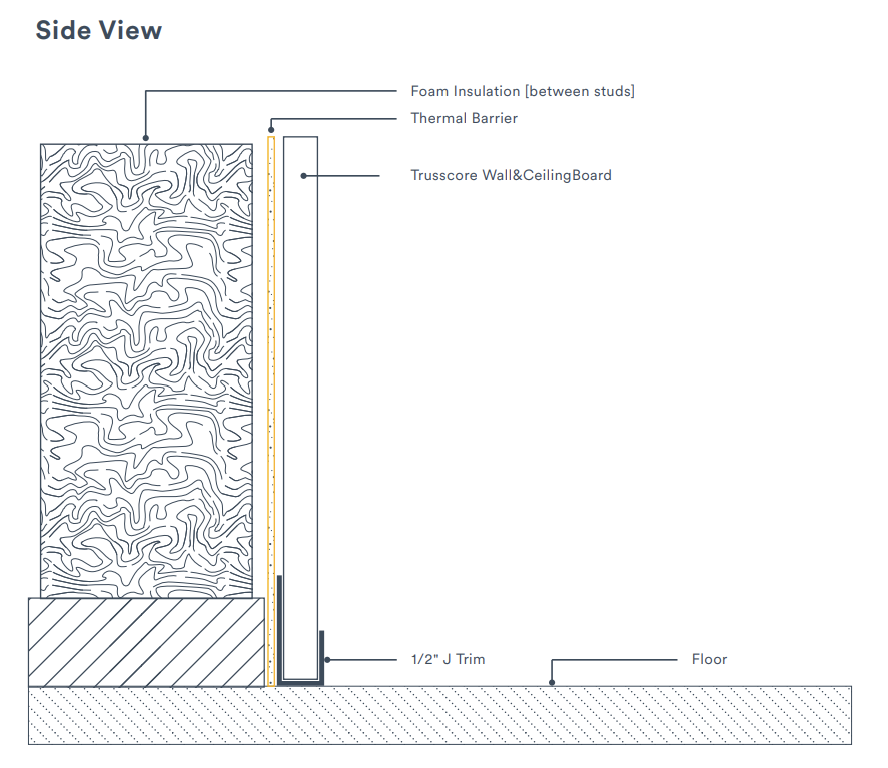Thermal Barriers in Residential and Commercial Construction with Foam Insulation
In residential and commercial construction using foam insulation, the installation of thermal barriers is a critical safety measure. While Trusscore products provide numerous benefits in these settings, they cannot be used as a substitute for thermal barriers.
Building Code Requirements for Foam Insulation
Residential and commercial buildings in the United States and Canada are subject to specific building codes regarding the use of foam insulation:
- In the U.S., the International Residential Code (IRC) and International Building Code (IBC) require thermal and ignition barriers in residential and commercial buildings.
- In Canada, the National Building Code of Canada (NBC) has comparable requirements which may vary from province to province.
Additional or different regulations may apply in commercial construction due to the varied nature of commercial buildings. For example, warehouses, office spaces, and retail buildings may have specific requirements based on their design and use, particularly regarding fire safety and insulation placement.
Types of Foam Insulation
In commercial and residential construction, foam insulation is integral for energy efficiency. Foam insulation is available in different forms, and each form requires specific safety measures:
- Spray Foam Insulation includes high, medium, and low-density foams with closed- and open-cell variations. High-density closed-cell foam is used for continuous insulation like wall cavities and unvented attics because of its high R-value. Low-density open-cell foam is suitable for smaller spaces like crawl spaces and attics because it expands more to cover greater areas despite its lower R-value.
- Rigid Foam Insulation is known for its high R-value and structural rigidity, and it’s a versatile insulator commonly used in both walls and roofs. Rigid foam insulation is available in polystyrene, polyisocyanurate, and polyurethane.
Both types of foam insulation typically require thermal barriers when installed in occupied spaces. Areas like attics or crawl spaces may need ignition barriers, but this depends on accessibility and the intended use of the space.

Trusscore Products and Thermal Barriers
Thermal barriers are essential for safety in residential or commercial construction, especially when using foam insulation. In fact, thermal barriers like ½” gypsum board are mandated by codes like the IRC and IBC to protect living spaces from the combustible nature of foam insulation. Alternatives like plywood, OSB, metal sheeting, intumescent or thermal coatings, and other materials can also act as thermal barriers.
Trusscore products cannot be used as thermal barriers.
In construction using foam insulation, a thermal barrier must be in place before you install Trusscore products — this ensures compliance with safety regulations and enhances the fire resistance of the structure.
Ignition barriers are usually required in non-living spaces like attics and crawl spaces insulated with foam. Since Trusscore products are used in occupied spaces where thermal barriers are required, ignition barriers aren’t relevant in this context.
Copyright © 2023 Trusscore Inc. Trusscore is a trademark of Trusscore Inc. All other trademarks are the property of their respective owners.
Specifications are subject to change. T-GL102-001 11/2023


